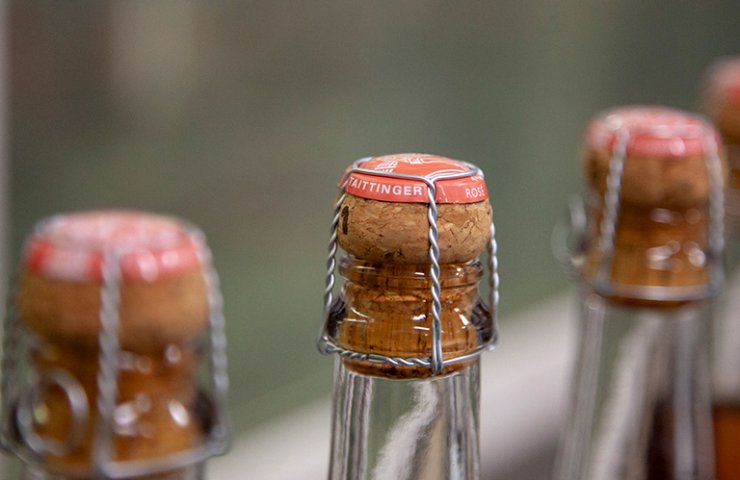The unique and complex process of opening a bottle of champagne is instantly recognizable and probably everyone has watched at some point in their lives. What many do not think, however, is that the iconic metal crate that must be removed before the cork is removed from the bottle is called Muselt and that each is made from 100 percent steel.
Muslet is not just an advantage, it is a necessity, says Françoise Peretti, Director of the Champagne Bureau in the UK and industry representative. For the past 174 years and still today, steel mesh has played a key role in keeping precious champagne in the bottle. Without Muslet, there would be no champagne at all.
So what's important to this industry and why is steel the preferred material?
Essentially, the Muslet is a small wire cage designed to secure the cork in a champagne bottle and keep it airtight from the pressure of its carbonated contents until it is open to drink.
Derived from the French word Museler - Muzzle - these cages are made up of three separate pieces assembled into a single piece, including a bottom ring, four wire legs and a metal round cover that can bear the name, emblem, logo or creative design by the manufacturer ... Each Muslet is mechanically attached to the cork and is traditionally covered with a branded foil hood or capsule.
Required element
Raw materials made of mild steel with a carbon content of less than 2% and no other noticeable alloying elements are the key to Musel's success. Also known as “low carbon steel,” it is strong and easy to handle, and is also affordable, making Muselt so practical, efficient and widespread in its use.
“Mousleys need to be pressure-resistant to be safe, but they also need to be resilient enough to shape, hygienic and anti-corrosive - which is why steel is the main material,” says Dominique Deneville, Production Manager at Champagne Taittinger, a family business ... headed by third generation producer Pierre-Emmanuelle Tytinger.
According to the Grandes Marques and the Maison de Champagne (Champagne Producers Union), each Muslet should “be able to twist and unwind the bottom ring easily without risk of breakage when opening the bottle”. Regardless of the size of the bottle being opened, this process requires a very precise six half turns of steel wire.
The wire must also be “flexible when pulled, but have a tensile strength greater than 300 N /mm 2 ” and be able to “withstand the pressure inside the bottle, which is measured at six bars or between five and six atmospheres ”- twice as high as in a tire and is equivalent to more than 5 kg of weight for each square centimeter of glass. This leads to the potential ejection of the cork of a vigorously shaken bottle of champagne at a speed of 40 km per hour and theoretically up to 100 km per hour for an unbreakable bottle left in the sun - a fact discovered by German scientist Friedrich Balck of the Clausthal University of Technology.
There are four main advantages that make steel the preferred material for the Champagne industry. It is cheaper than brass or copper and has better durability and mechanical properties. It also has excellent elasticity to withstand many of the bends required for the production of Musel, and has high mechanical strength; maintaining the cork despite the pressure inside the bottle.
Deneville particularly credits the longevity of steel with the Champagne House's ability to maintain consistently fast filling lines that handle around 6,000 bottles per hour. “Thanks to steel, we can fulfill this function,” he says.
Historical development
Historically, the earliest attempts to maintain pressure inside a champagne bottle involved wooden corks wrapped in oily cloth and sealed with wax, and then more recently cork corks attached to the bottle with simple forms of hemp thread that were hand sealed. However, both methods soon lost their popularity due to their inadequacy and the amount of marriage.
In 1844, Adolphe Jacesson was the first to insert a steel plate between the top of the cork and its ties, balancing the forces on the cork and preventing the strings from entering the cork under pressure. Then a metal clasp was added, followed by a steel cage, but these early Muselis were difficult to install and difficult to open.
During the 19th century, significant advances were made in the design and manufacture of Muslet, where supply chains, material development and machine automation played a large role. However, it was the Cortellazzi brothers in Italy in 1952 who developed the first semi-automatic machine that combined all three components of the Muselle from





